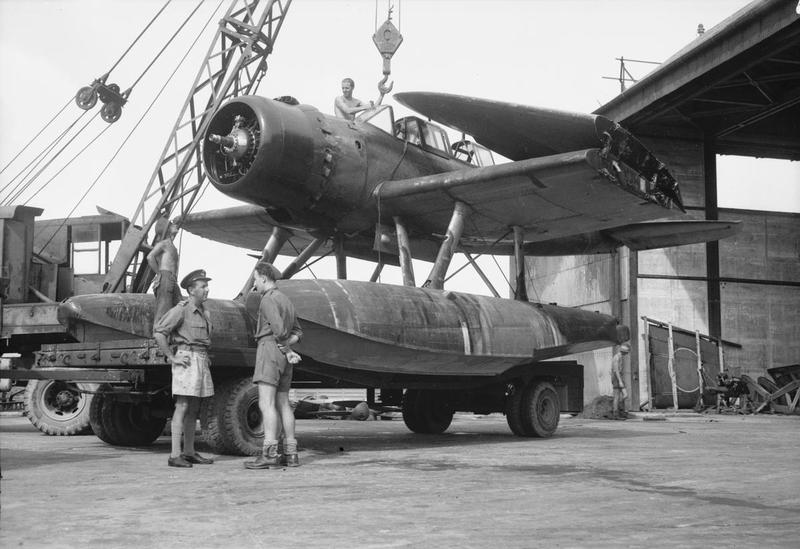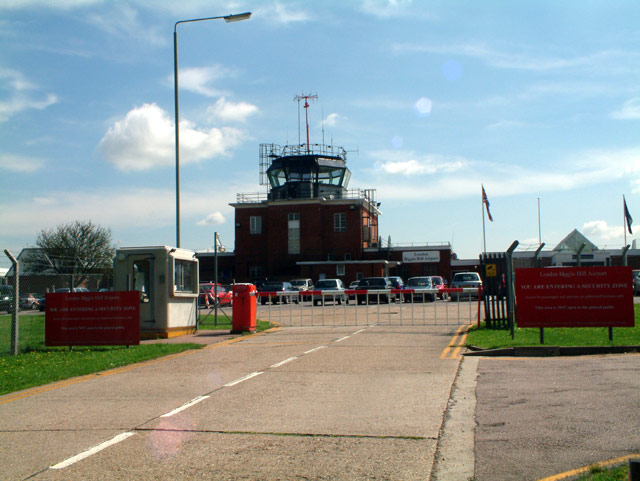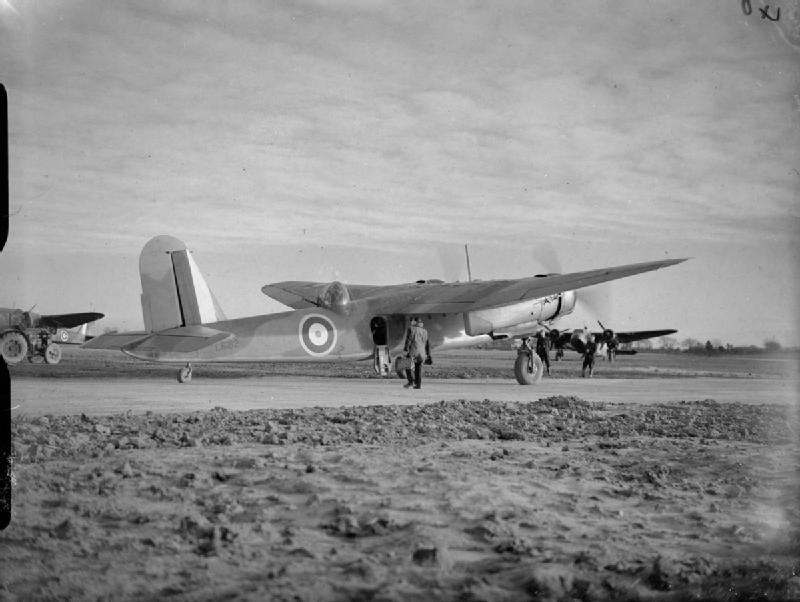|
RAF Hornby Hall
RAF Hornby Hall was a Royal Air Force satellite landing ground located near Brougham, east of Penrith, Cumbria and north west of Appleby-in-Westmorland, Cumbria, England. History The airfield was opened on 17 March 1941, and was mostly used by No. 22 Maintenance Unit RAF (MU) at RAF Silloth but changed to No. 12 MU at RAF Kirkbride. The landing ground was also temporarily operated by No. 18 MU at RAF Dumfries sometime between July and September 1940. Closure came in July 1945, when the site was converted into a PoW camp for German prisoners. Aircraft operated * Fairey Battles * Bristol Blenheims * Blackburn Bothas * Lockheed Hudsons See also * List of former Royal Air Force stations * List of Royal Air Force Maintenance units The following is a list of Royal Air Force Maintenance Units (MU). The majority of MUs were previously Equipment Depots (ED), Storage Depots (SD) and Aircraft Storage Units (ASU)s. No. 1 MU – No. 100 MU No. 101 MU – No. 200 MU N ... [...More Info...] [...Related Items...] OR: [Wikipedia] [Google] [Baidu] |
Ensign Of The Royal Air Force
An ensign is the national flag flown on a vessel to indicate nationality. The ensign is the largest flag, generally flown at the stern (rear) of the ship while in port. The naval ensign (also known as war ensign), used on warships, may be different from the civil ensign (merchant ships) or the yacht ensign (recreational boats). Large versions of naval ensigns called battle ensigns are used when a warship goes into battle. The ensign differs from the jack (flag), jack, which is flown from a jackstaff at the bow of a vessel. In its widest sense, an ensign is just a flag or other standard. The European military rank of Ensign (rank), ensign, once responsible for bearing a unit's standard (whether national or regimental), derives from it (in the cavalry, the equivalent rank was Cornet (rank), cornet, named after a type of flag). Ensigns, such as the ancient Roman ensigns in the Arch of Constantine, are not always flags. National ensigns In nautical use, the ensign is flown on a shi ... [...More Info...] [...Related Items...] OR: [Wikipedia] [Google] [Baidu] |
RAF Kirkbride
RAF Kirkbride, was a Second World War era airfield in the village of Kirkbride, Cumbria, England. Opened in June 1939, the base was intended to be an aircraft repair depot, as its location was deemed to be far enough away from the threat of enemy aircraft. After the Second World War, the site remained open as a maintenance unit and a disposal airfield for redundant aircraft. It was closed in 1960. History The site was acquired in 1937, and intended to be operational by December 1939, however, this was brought forward six months, and the airbase was operating by June 1939. Building work continued post-opening, with the first hangar not being completed until the end of July 1939. In the planning stage, the airfield was intended to be an ASU (aircraft storage unit), rather than an ARD (aircraft repair depot), which is what it became with the work of No. 12 MU. The first aircraft arrived by rail, as the runway was not ready until the autumn of 1939. The station was provided with ... [...More Info...] [...Related Items...] OR: [Wikipedia] [Google] [Baidu] |
List Of Royal Air Force Maintenance Units
The following is a list of Royal Air Force Maintenance Units (MU). The majority of MUs were previously Equipment Depots (ED), Storage Depots (SD) and Aircraft Storage Units (ASU)s. No. 1 MU – No. 100 MU No. 101 MU – No. 200 MU No. 201 MU – No. 300 MU No. 301 MU – No. 400 MU No. 401 MU – No. 500 MU No. 1 (India) MU – No. 10 (India) MU See also *List of Royal Air Force aircraft squadrons *List of RAF Regiment units *List of Fleet Air Arm aircraft squadrons * List of Army Air Corps aircraft units *List of Air Training Corps squadrons *List of Battle of Britain squadrons *University Air Squadron *Air Experience Flight *Volunteer Gliding Squadron *List of Royal Air Force units & establishments *List of Royal Air Force schools *List of Royal Air Force aircraft independent flights * List of RAF squadron codes *List of conversion units of the Royal Air Force *United Kingdom military aircraft serial numbers *United Kingdom aircraft test serials *Br ... [...More Info...] [...Related Items...] OR: [Wikipedia] [Google] [Baidu] |
List Of Former Royal Air Force Stations
This list of former RAF stations includes most of the stations, airfields and administrative headquarters previously used by the Royal Air Force. The stations are listed under any former county or country name which was appropriate for the duration of operation. It has been stated that RAF stations took their name from the civil parish in which the station headquarters was located, rather than the nearest railway station (e.g., Binbrook has never had a railway station), but there are many exceptions. __TOC__ British Isles Chain Home, Chain Home Low, Chain Home Extra Low, ROTOR and tropo-scatter stations Notes: Some of the Chain Home Low sites were co-located with the larger Chain Home radars. Chain Home Extra Low equipment was co-located with "Chain Home" and "Chain Home Low" as well as at separate sites, but were of a less permanent nature, usually with mobile equipment. ROTOR was the post war Radar interception system created from existing radar installations. NARS ... [...More Info...] [...Related Items...] OR: [Wikipedia] [Google] [Baidu] |
Lockheed Hudson
The Lockheed Hudson is a light bomber and coastal reconnaissance aircraft built by the American Lockheed Aircraft Corporation. It was initially put into service by the Royal Air Force shortly before the outbreak of the Second World War and primarily operated by it thereafter. The Hudson was a military conversion of the Model 14 Super Electra airliner, and was the first significant aircraft construction contract for Lockheed — the initial RAF order for 200 Hudsons far surpassed any previous order the company had received. The Hudson served throughout the war, mainly with Coastal Command but also in transport and training roles, as well as delivering agents into occupied France. It was also used extensively with the Royal Canadian Air Force's anti-submarine squadrons and by the Royal Australian Air Force. Design and development In late 1937 Lockheed sent a cutaway drawing of the Model 14 to various publications, showing the new aircraft as a civilian aircraft and converte ... [...More Info...] [...Related Items...] OR: [Wikipedia] [Google] [Baidu] |
Blackburn Botha
The Blackburn B.26 Botha was a four-seat reconnaissance and torpedo bomber. It was produced by the British aviation company Blackburn Aircraft at its factories at Brough and Dumbarton. The Botha was developed during the mid 1930s in response to Air Ministry Specification M.15/35, and was ordered straight off the drawing board alongside the competing Bristol Beaufort. On 28 December 1938, the first production aircraft made the type's maiden flight; almost exactly one year later, it enter service with the RAF. During official evaluation testing of the Botha, stability issues were revealed, as well as the fact that it was underpowered. It was only briefly used in frontline operations before being withdrawn to secondary roles during 1941. It continued to be flown in secondary roles, largely being used for training and as a target tug, before the Botha was fully withdrawn during September 1944. Development During September 1935, the British Air Ministry issued specification M.15/35 ... [...More Info...] [...Related Items...] OR: [Wikipedia] [Google] [Baidu] |
Bristol Blenheim
The Bristol Blenheim is a British light bomber aircraft designed and built by the Bristol Aeroplane Company (Bristol) which was used extensively in the first two years of the Second World War, with examples still being used as trainers until the end of the war. Development began with the ''Type 142'', a civil airliner, in response to a challenge from Lord Rothermere to produce the fastest commercial aircraft in Europe. The ''Type 142'' first flew in April 1935, and the Air Ministry, impressed by its performance, ordered a modified design as the ''Type 142M'' for the Royal Air Force (RAF) as a bomber. Deliveries of the newly named Blenheim to RAF squadrons commenced on 10 March 1937. In service the Type 142M became the Blenheim Mk.I which would be developed into the longer Type 149, designated the Blenheim Mk.IV, except in Canada where Fairchild Canada built the Type 149 under licence as the Bolingbroke. The Type 160 Bisley was also developed from the Blenheim, but was already o ... [...More Info...] [...Related Items...] OR: [Wikipedia] [Google] [Baidu] |
Fairey Battle
The Fairey Battle is a British single-engine light bomber that was designed and manufactured by the Fairey Aviation Company. It was developed during the mid-1930s for the Royal Air Force (RAF) as a monoplane successor to the Hawker Hart and Hind biplanes. The Battle was powered by the same high-performance Rolls-Royce Merlin piston engine that powered various contemporary British fighters such as the Hawker Hurricane and Supermarine Spitfire. As the Battle, with its three-man crew and bomb load, was much heavier than the fighters, it was therefore much slower. Though a great improvement over the aircraft that preceded it, its relatively slow speed, limited range and inadequate defensive armament of only two .303 (7.7 mm) machine guns left it highly vulnerable to enemy fighters and anti-aircraft fire.Ethell 1995, p. 177. The Fairey Battle was used on operations early in the Second World War. During the "Phoney War" the type achieved the distinction of scoring the first aer ... [...More Info...] [...Related Items...] OR: [Wikipedia] [Google] [Baidu] |
RAF Dumfries
Royal Air Force Dumfries or more simply RAF Dumfries was a former Royal Air Force station located near Dumfries, Dumfries and Galloway Scotland. The airfield opened on 17 June 1940 and was sold in 1960 to a private firm. The disused airfield is now used as the Dumfries and Galloway Aviation Museum. History No. 18 Maintenance Unit RAF, (18 MU) was allotted to No. 41 Group RAF (41 Gp) and became the lodger unit on 17 June 1940. No aircraft were flown in until the end of June when the obstructions placed on the airfield to prevent enemy aircraft from landing were removed. 18 MU reverted to a tenant unit on 13 July 1940 and No. 10 Bombing and Gunnery School RAF (10 B&GS) of No. 25 Group RAF (25 Gp) (RAF Flying Training Command) relocated from RAF Warmwell, Dorset. 10 B&GS trained bomb-aimers and gunners in Handley Page H.P.54 Harrows and Fairey Battles before further training at Operational Training Units. The airfield consisted of a grass runway, upgraded to hard surfaces d ... [...More Info...] [...Related Items...] OR: [Wikipedia] [Google] [Baidu] |
RAF Silloth
Royal Air Force Silloth or RAF Silloth is a former Royal Air Force station north-east of Silloth, Cumbria, England, and south-west of Kirkbride, Cumbria. The station was used by RAF Coastal Command. The airfield is also known as Silloth Airfield/Aerodrome. Station history The airfield was originally designed to be used by RAF Maintenance Command but was handed over to Coastal Command in November 1939. It had a satellite at RAF Hornby Hall. Based units * No. 1 (Coastal) Operational Training Unit RAF (OTU) using Avro Ansons, Bristol Beauforts and Bothas. * No. 6 Operational Training Unit RAF with the Vickers Wellington and Anson. * No. 215 Squadron RAF using the Wellington. * No. 320 (Netherlands) Squadron RAF using the Avro Anson I. * No. 22 Maintenance Unit RAF. * No. 1353 (Target Towing) Flight RAF using the Supermarine Spitfire and the Vultee A-31 Vengeance. * No. 5 Ferry Pool RAF. Current use Many of the buildings still survive, including the hangars, but the runw ... [...More Info...] [...Related Items...] OR: [Wikipedia] [Google] [Baidu] |
Air Ministry
The Air Ministry was a department of the Government of the United Kingdom with the responsibility of managing the affairs of the Royal Air Force, that existed from 1918 to 1964. It was under the political authority of the Secretary of State for Air. Organisations before the Air Ministry The Air Committee On 13 April 1912, less than two weeks after the creation of the Royal Flying Corps (which initially consisted of both a naval and a military wing), an Air Committee was established to act as an intermediary between the Admiralty and the War Office in matters relating to aviation. The new Air Committee was composed of representatives of the two war ministries, and although it could make recommendations, it lacked executive authority. The recommendations of the Air Committee had to be ratified by the Admiralty Board and the Imperial General Staff and, in consequence, the Committee was not particularly effective. The increasing separation of army and naval aviation from 191 ... [...More Info...] [...Related Items...] OR: [Wikipedia] [Google] [Baidu] |
England
England is a country that is part of the United Kingdom. It shares land borders with Wales to its west and Scotland to its north. The Irish Sea lies northwest and the Celtic Sea to the southwest. It is separated from continental Europe by the North Sea to the east and the English Channel to the south. The country covers five-eighths of the island of Great Britain, which lies in the North Atlantic, and includes over 100 smaller islands, such as the Isles of Scilly and the Isle of Wight. The area now called England was first inhabited by modern humans during the Upper Paleolithic period, but takes its name from the Angles, a Germanic tribe deriving its name from the Anglia peninsula, who settled during the 5th and 6th centuries. England became a unified state in the 10th century and has had a significant cultural and legal impact on the wider world since the Age of Discovery, which began during the 15th century. The English language, the Anglican Church, and Engli ... [...More Info...] [...Related Items...] OR: [Wikipedia] [Google] [Baidu] |








